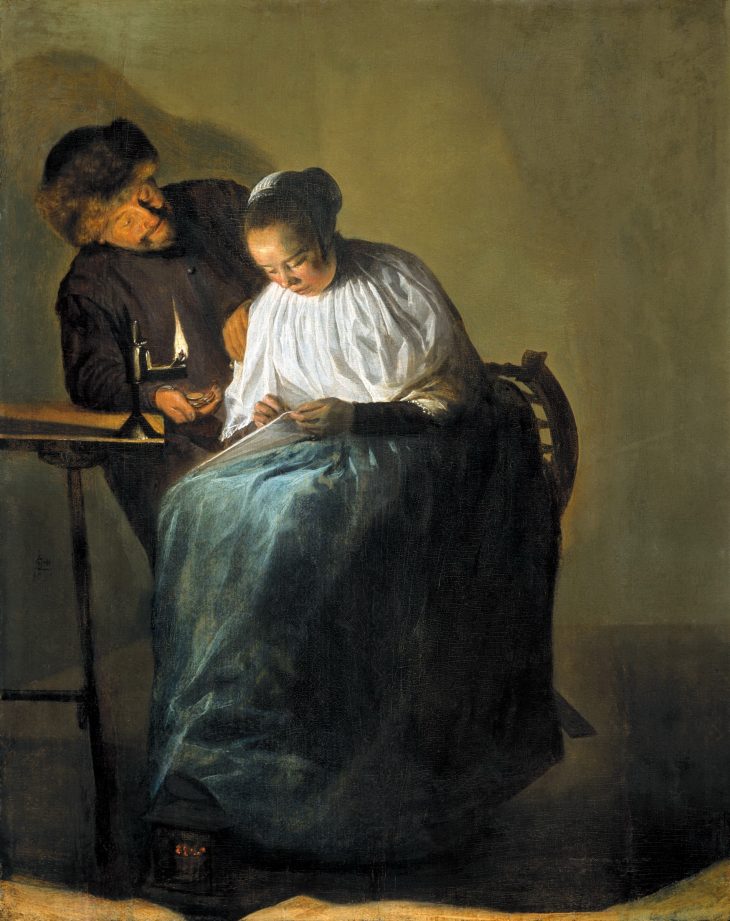Judith Leyster (1609-1660)
Wonderful Female Painters
We could make this publication thanks to small donations. How is 3 minutos de arte supported?
Judith Leyster (1609-1660)
The Proposition (1631)
She was a painter of the golden age of Dutch painting (in the Baroque period), forgotten by the world for a couple of centuries until she returned to occupy the place she deserved.
At a very young age, she managed to enter the prestigious Harlem Painters’ Guild of St. Luke, something unusual for a female painter. But even more surprising is that she managed to have her own workshop, where she had male students, a cultural rarity for the time.
Her work was appreciated during her lifetime; her colleagues respected and admired her. Her genre paintings —which showed scenes of everyday life at home, at work, at leisure, in the street, in taverns, and at parties— were in great demand among the bourgeoisie of the time.
However, when she died, the world almost completely forgot about her.
How was her work rediscovered, researched, and properly valued? She had been very close to Frans Hals, another well-known painter in the guild of St. Luke. Their relationship is not well known, but she may have been his pupil or friend. Their works have a remarkable resemblance, so much so that they are confused with each other. Also, Judith’s signature, which is a poorly legible monogram and can be confused with Hals’, does not help.
Two centuries after her death, at the end of the 19th century, in a scandalous case that went to court, it was resolved that a painting by Hals was not by Hals, and the monogram of Judith was deciphered.
It was then discovered that a good number of paintings attributed to other Dutchmen were actually by the “unknown” Leyster. The situation is indeed funny: the owners of the paintings were frustrated because the paintings were not of a famous person, and they were actually painted by someone who would become even more famous.
The painting we have chosen, The Proposition, is a very particular painting. Its meaning has been much debated, but in the end, it has been concluded that the man offers money to the woman in exchange for favors, and she rejects him. In that case, it becomes a crucial work because it goes against the custom of showing women as provocateurs of sin. It is not the woman who is seducing.
With the tension and drama provoked by the extreme chiaroscuro, Leyster attacks the traditional representation of women and shows them as more than decent, full of dignity.
Recommended links:
Dutch Golden Age (Dutch Baroque).
Timeline: Artistic movements from Classical Antiquity to Rococo.
Characteristic Elements of Baroque Painting.
The Lacemaker (1669), Johannes Vermeer.
You can also find more material using the search engine.




0 Comments